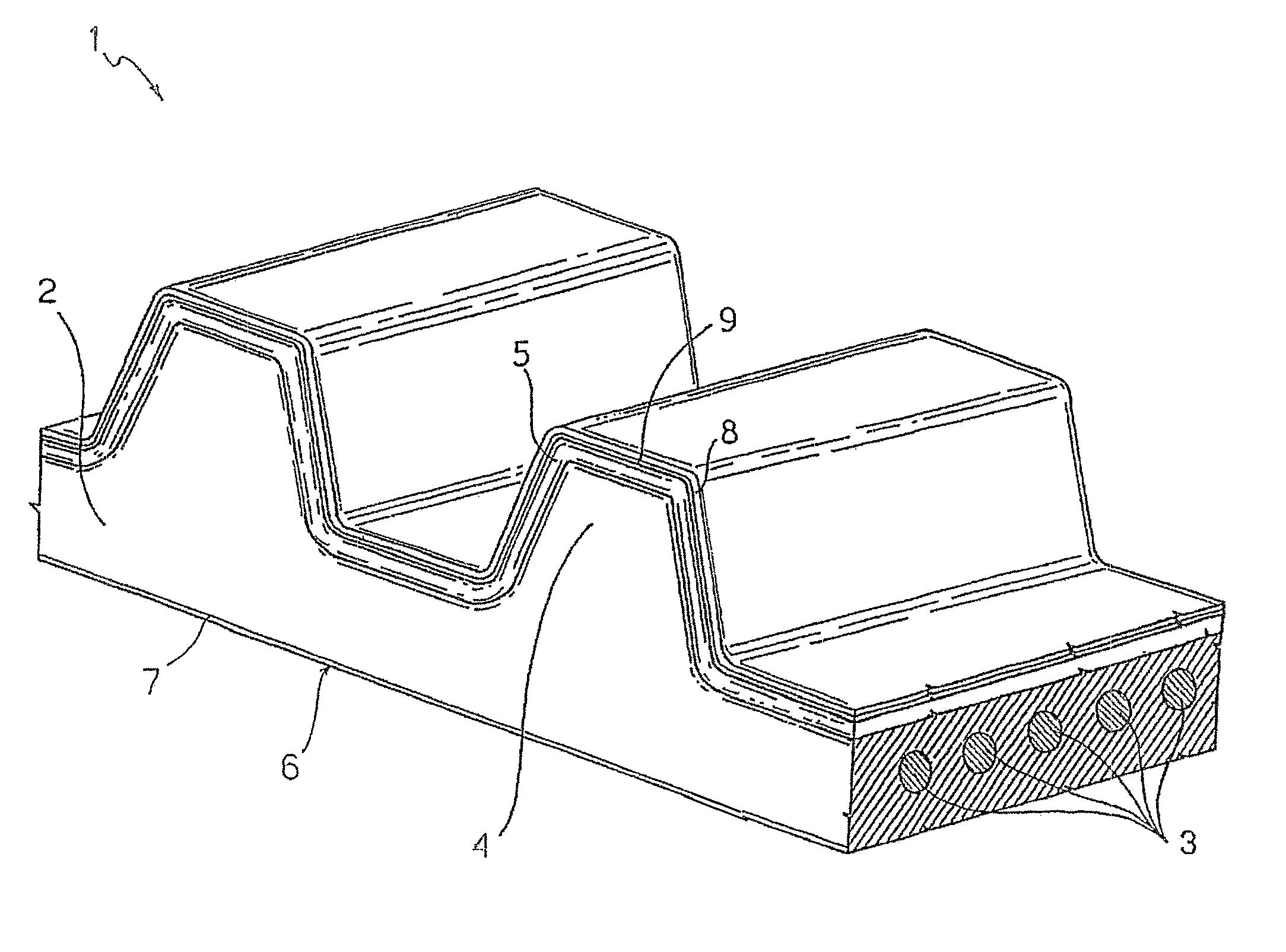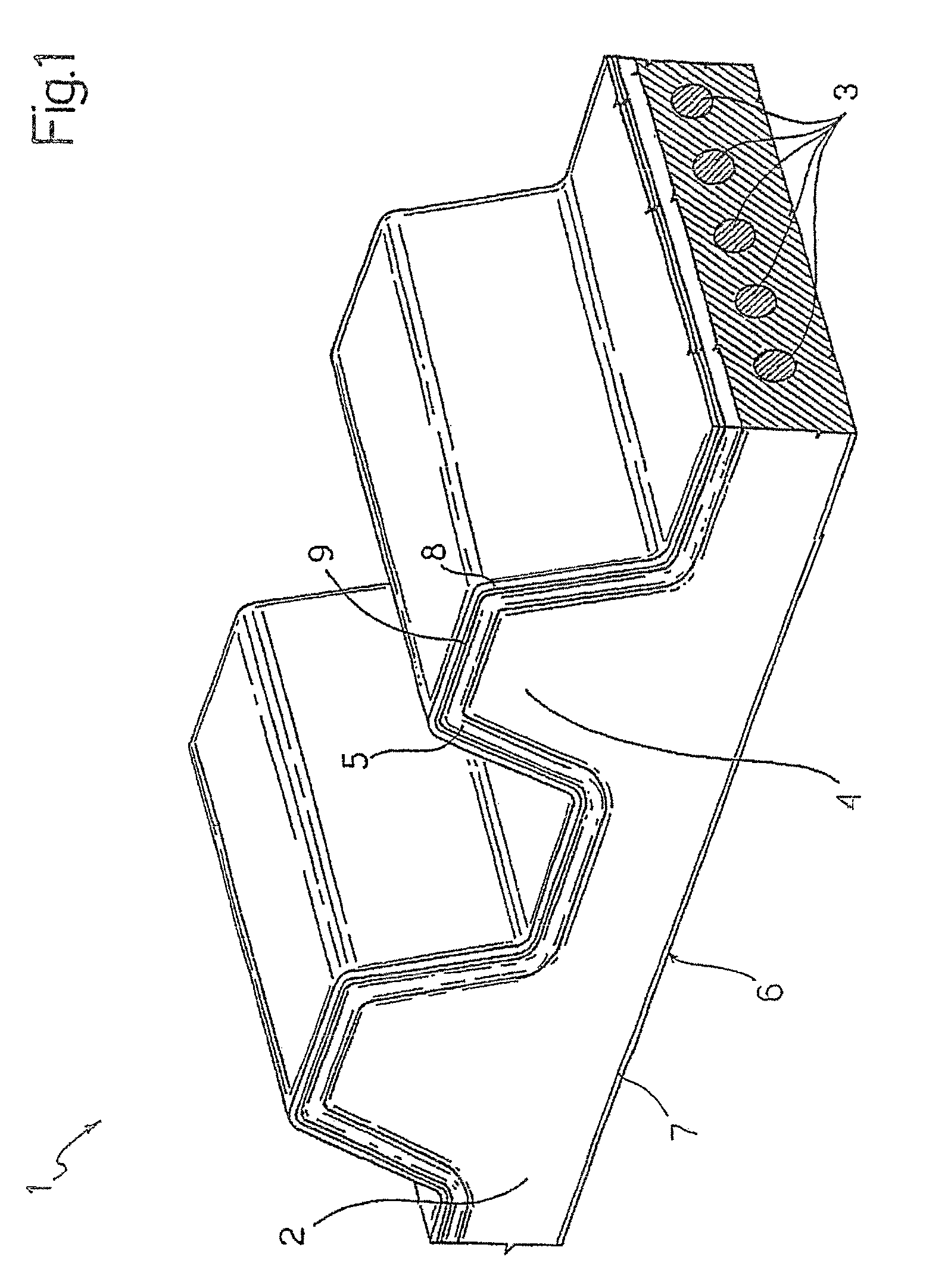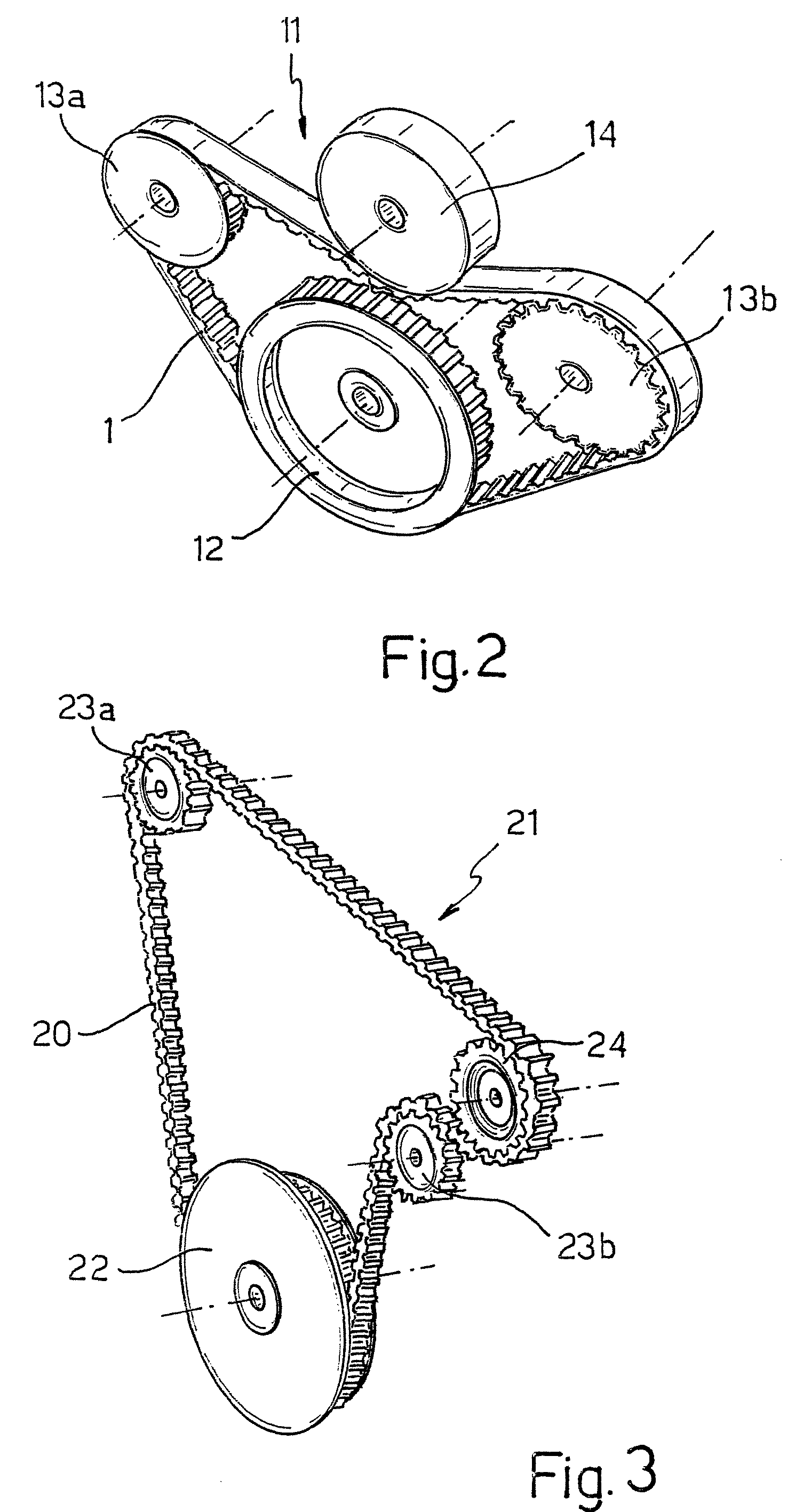Toothed belt and timing control system
a technology of timing control system and toothed belt, which is applied in the direction of driving belts, v-belts, closed loop articles, etc., can solve the problems of reducing the friction coefficient of coating fabric on the working surface, reducing the deformation of teeth, and tooth shear, and achieves excellent mechanical characteristics of adhesion, low acoustic emission, and resistance to wear
- Summary
- Abstract
- Description
- Claims
- Application Information
AI Technical Summary
Benefits of technology
Problems solved by technology
Method used
Image
Examples
examples 1-5
Body Mixture and Combined Ranges
[0088]Table 1 shows belts designated by the numbers 1 to 5, made according the present invention and therefore having percentages of nitrile groups (ACN) in the HNBR forming the body mixture (examples 1 to 3) within the range of 30 to 39 wt % compared with belts (examples 4 and 5) having percentages of nitrile groups (ACN) in the HNBR forming the body mixture outside the claimed ranges.
[0089]HNBRs are used for the body mixtures having a grade of 0.9%.
[0090]
TABLE 1Percentagesof ACN inPer-PercentagesPercentagesHNBR ofcentagesof ACN inof ACN infabricof ACN inHNBR ofHNBR oftreatmentHNBR ofcordfabricfor theTestExamplethe bodytreatmenttreatmentback(h)1333333—1562393333—1563443333—1444283333—2165493333—96
[0091]The belts are dynamically tested with duration tests at temperature of −25° C.
[0092]The test cycle comprise a first step of cooling for 8 h (not considered in duration). After the cooling step the engine is started for 30 sec. with a of 1000 rpm, and t...
examples 6-10
Fabric Treatment and Combined Ranges
[0097]Table 2 shows belts made according the present invention and therefore having percentages of nitrile groups (ACN) in the HNBR forming the fabric treatment (examples 6 and 7) within the range of 30 to 39 wt % compared with belts (examples 8 to 10) having percentages of nitrile groups (ACN) in the HNBR forming the fabric treatment outside the claimed ranges. HNBRs are used for the fabric treatment having a grade of 0.9%.
[0098]
TABLE 2PercentagesPercentagesAdhesionPercentagesofPercentagesof ACN intestofACN inof ACNHNBR ofafter 10ACN inHNBR ofin HNBR offabricmillionHNBR ofcordfabrictreatmentcyclesEx.the bodytreatmenttreatmentfor the back(N / cm)6333333—1877333339—2568333344—2489333349—26310333328—140
[0099]In particular, the belts have undergone adhesion test and the conditions of the test were according to ISO 12046. In particular, the belt according to the invention has undergone tests in contact with oil and particularly in control systems in whi...
examples 11-13
Cord Treatment and Combined Ranges
[0106]Table 3 shows belts made according the present invention and therefore having percentages of nitrile groups (ACN) in the HNBR forming the cord treatment (example 11) within the range of 30 to 39 wt % compared with belts (examples 8 to 9) having percentages of nitrile groups (ACN) in the HNBR forming the fabric treatment outside the claimed ranges.
[0107]
TABLE 3PercentagesPercentagesof ACN inPercentagesof ACN inHNBR ofof ACN inHNBR offabricDurationHNBR of theCordfabrictreatmenttest atExbodytreatmenttreatmentfor the back180° C.1133HNBR333368withACN33 wt %1233VP-333328SBR1333CSM333321
[0108]The conditions in which the test was conducted are given in Table 4.
[0109]
TABLE 4Type of Belt141 RHX 150Engine rpm4000 rpmTemperature of back of belt180° C.
[0110]The values of duration tests for measuring the lifetime of the belt in dynamic condition and in working condition, i.e. at high temperature, and precisely at 180° C., are given in chart of FIG. 5. To ex...
PUM
| Property | Measurement | Unit |
|---|---|---|
| temperatures | aaaaa | aaaaa |
| length | aaaaa | aaaaa |
| length | aaaaa | aaaaa |
Abstract
Description
Claims
Application Information
 Login to View More
Login to View More - R&D
- Intellectual Property
- Life Sciences
- Materials
- Tech Scout
- Unparalleled Data Quality
- Higher Quality Content
- 60% Fewer Hallucinations
Browse by: Latest US Patents, China's latest patents, Technical Efficacy Thesaurus, Application Domain, Technology Topic, Popular Technical Reports.
© 2025 PatSnap. All rights reserved.Legal|Privacy policy|Modern Slavery Act Transparency Statement|Sitemap|About US| Contact US: help@patsnap.com



